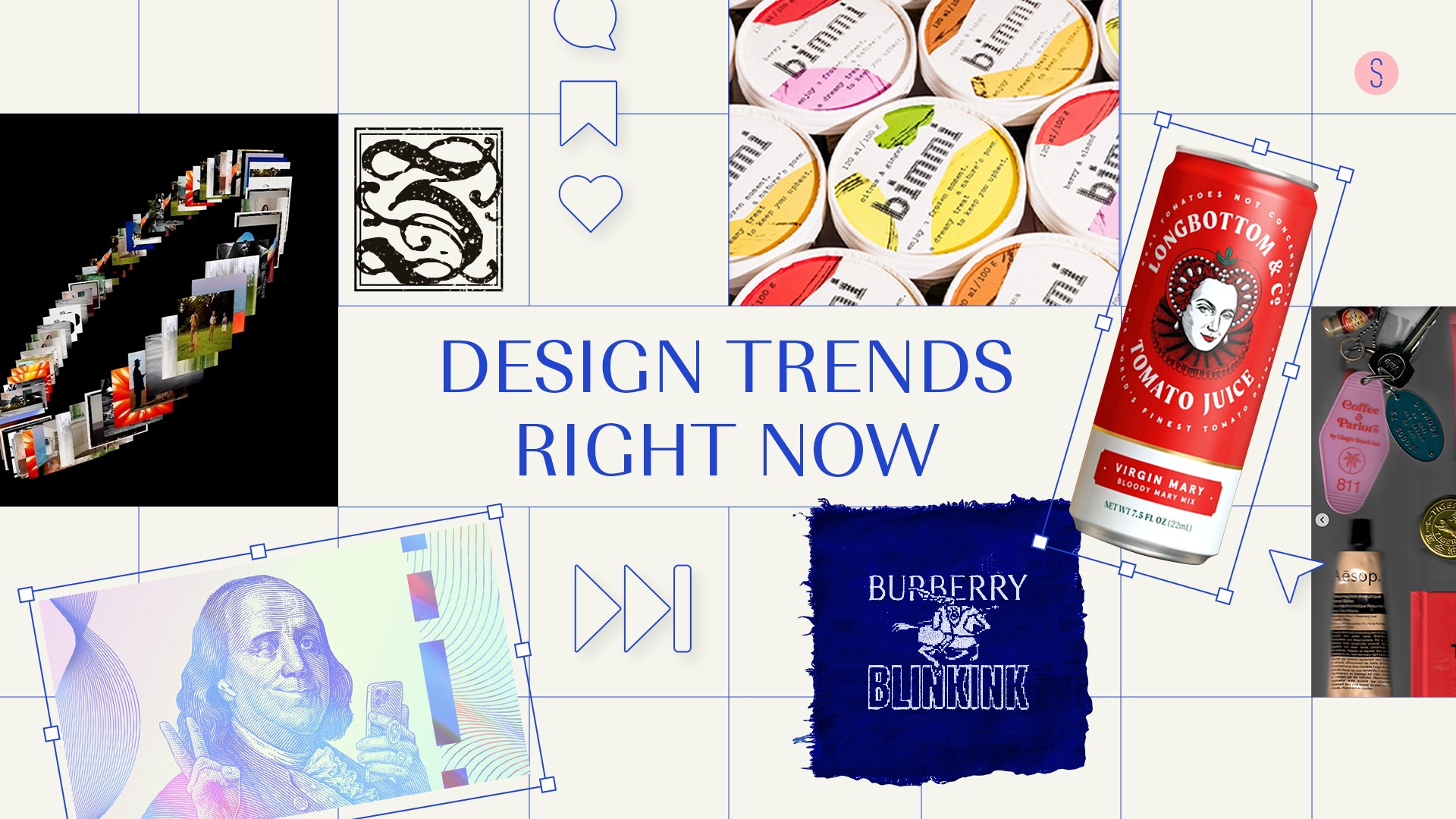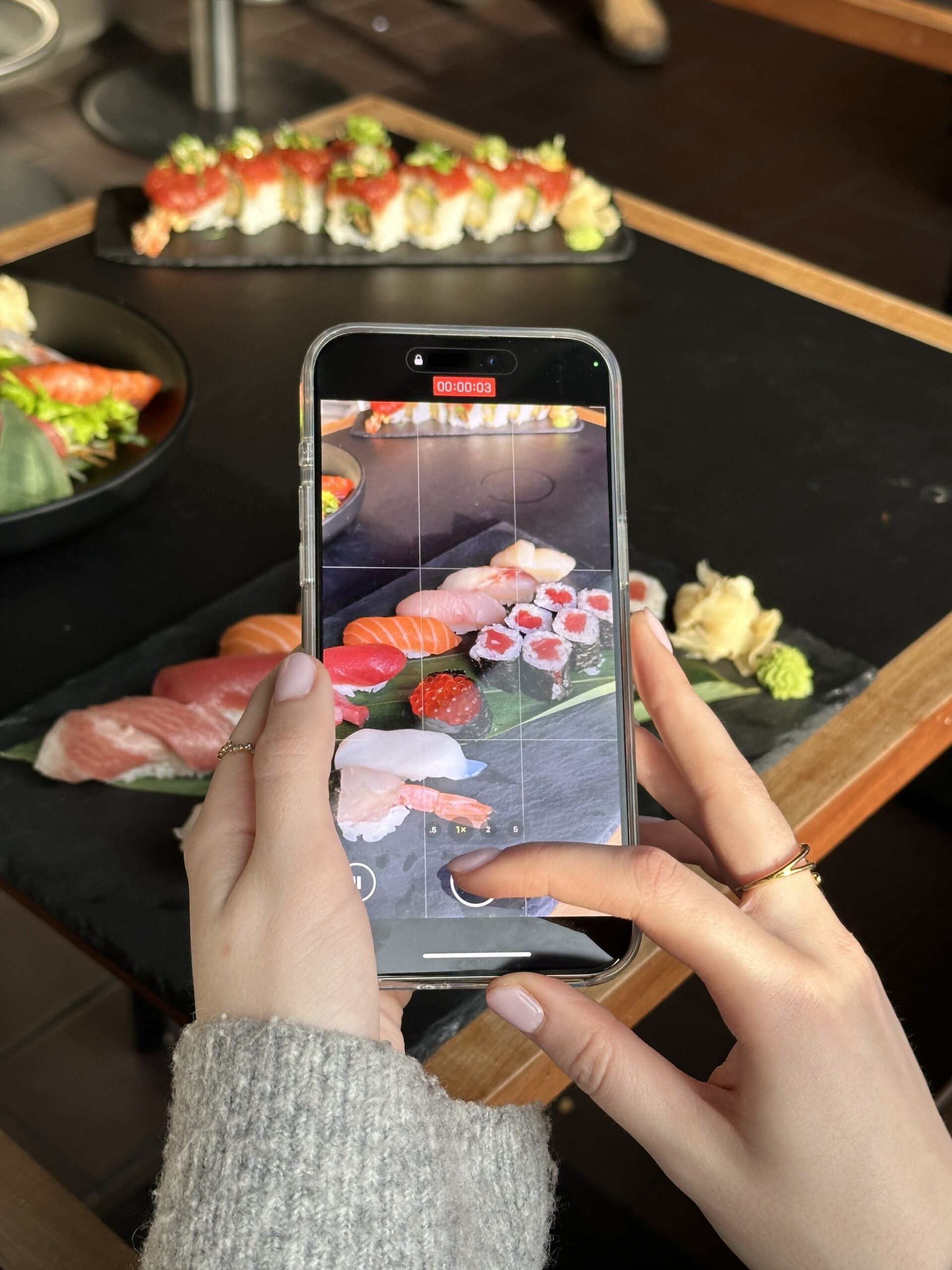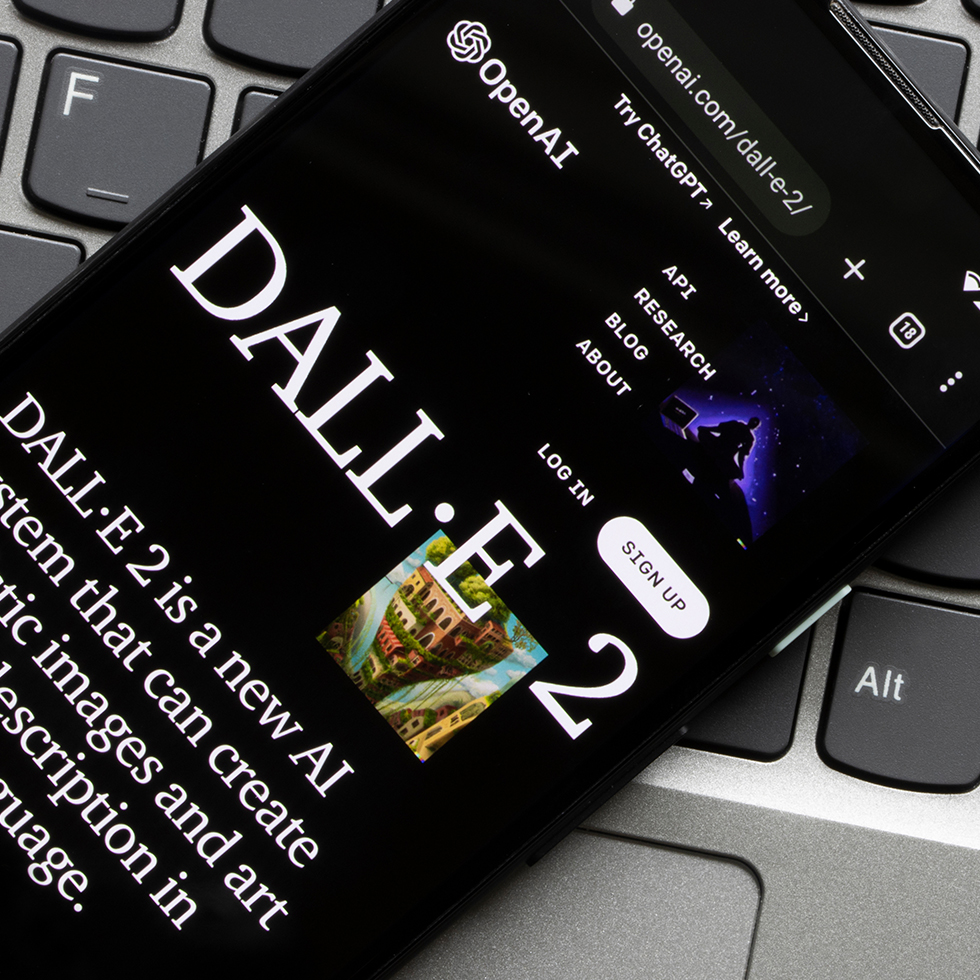How visual needs are chaning in a high tech world.
Design trends go beyond what we find visually appealing each year; they serve as powerful reflections of societal shifts and global changes. In an era of unprecedented artificial intelligence, today’s visual trends capture a clash between embracing technological advancements and the desire to bring back all that is pre-digital and handmade.
A Perpetual State of Motion
One of the first things that comes to mind when considering how modern technology affects society is how screen overexposure is rapidly shrinking our attention spans. A study by Microsoft reported that human attention spans had declined to an average of 8 seconds, (a decrease of 25% in recent years), while other studies suggest that average screen times per day have increased by 2 hours since 2025. As our lives become saturated with digital content, visual marketing has become extremely fast-paced and motion-led. Along with almost every brand having an animated logo or ident, other assets that would typically be static are being brought to life with fun and innovative motion design. Photographs that would usually sit on separate slides of an Instagram carousel, or a few scrolls apart on a web page, area instead weaved together in quick succession within a lively animation. This technique allows design studios to make brands feel alive, to catch the eye of consumers before their fast-approaching scroll.
Imperfectly Analogue & Handmade
The saturation of screens in our lives also seems to have brought a nostalgia for pre-digital eras, with a growing popularity of analogue and handmade design techniques. Canva’s 2025 trend report marked ‘Analog Meets AI’ and ‘Serious Fun’ as trends to watch, with searches for ‘Scrapbook’ and ‘Silly’ both increasing by 92%. As brands take on more casual and friendly tones of voice to connect with consumers, the design world is prioritising authenticity over perfection. This comes with a rise in printmaking textures, mixed media collaging, handwriting, and sketching.
Frozen smoothie brand Bimmi is embracing imperfection with a logo built from typewriter letters, a classic analogue writing form, and packaging decorated in ink-splattered fruit cut outs. Monopo’s ‘Desk Dive’ series uses mixed media in a creative way to highlight the people behind their business, using ID card overlays and photocopy scans of personal items. Burberry also took an analogue approach to announce their Winter 2025 Collection, working with Blinkink to create a series of stunning animations made completely out of 120 cross-stitched frames. With AI image generating tools and platforms such as Canva making design more accessible to the masses, human craftsmanship is proving to be a truly fashionable quality in visual marketing.
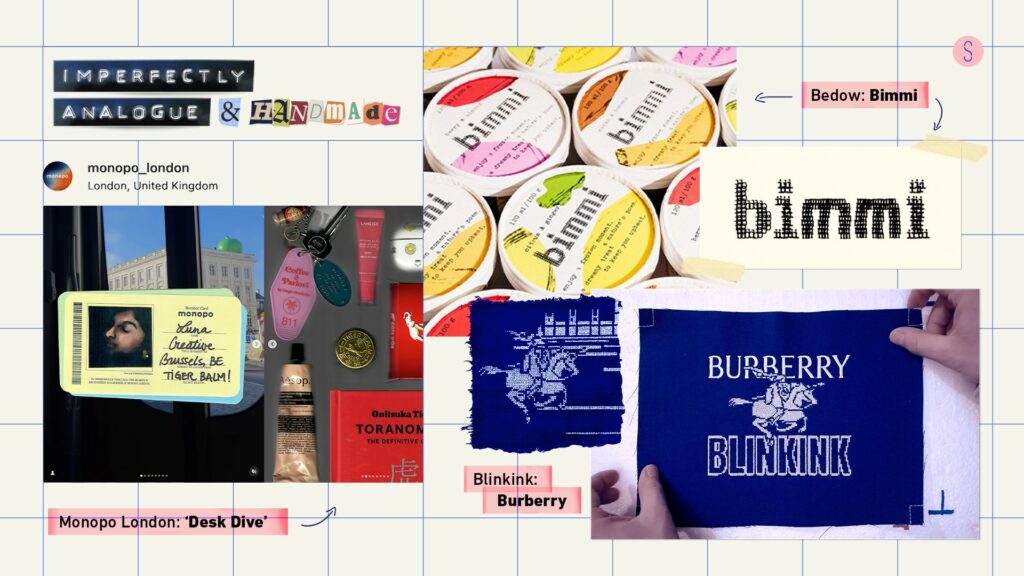
Modern Heritage
As we gravitate towards designs with a personal and human touch, we’re also seeing more brands lean into the idea of heritage and history. Ever since Burberry unveiled their new serif logo and the return of their original knight icon in 2023, ornate elements have continued to gain popularity as designers revive techniques of the past in modern fashion. This means we’re seeing more serif, script, and blackletter fonts, along with projects that reinvent illustrative iconography such as stamps, crests, and bookplates. Serifs are becoming a particular favourite for social media content creators as their font of choice for text overlays, often mimicking film titles which help to make short-form videos feel cinematic.
Creatives believe the return of these styles is a response to the saturation of sans serif fonts in recent years, and repeatedly seeing modern rebrands strip back brand characteristics. As a result, today’s audiences value eccentricities and unique qualities more than ever. Brands are embracing designs with bolder personalities and refusing to shy away from detail and decoration, combining contemporary styles with traditional elements.
The Print Awards demonstrated this when they shifted from their tech-centric aesthetic and moved to an identity inspired by organic forms, opting for an elegant and intricate script logo paired with 3D rendered flowers and stone surfaces. We also see this sentiment in Longbottom & Co’s rebrand by Derek&Erik, transforming their minimalist branding into a playful homage to British heritage, with an etched Queen Mary illustration as their new figurehead. Online finance platform Plaid‘s rebrand epitomizes the modern heritage hybrid as they combine gradients and waveforms, familiar to tech branding, with the intaglio illustration style found on printed money. Pretty Little Thing’s recent rebrand is also a prime example of companies tactically switching to traditional aesthetics in the hopes of creating a more favorable band image and building what they call ‘a legacy in progress’.
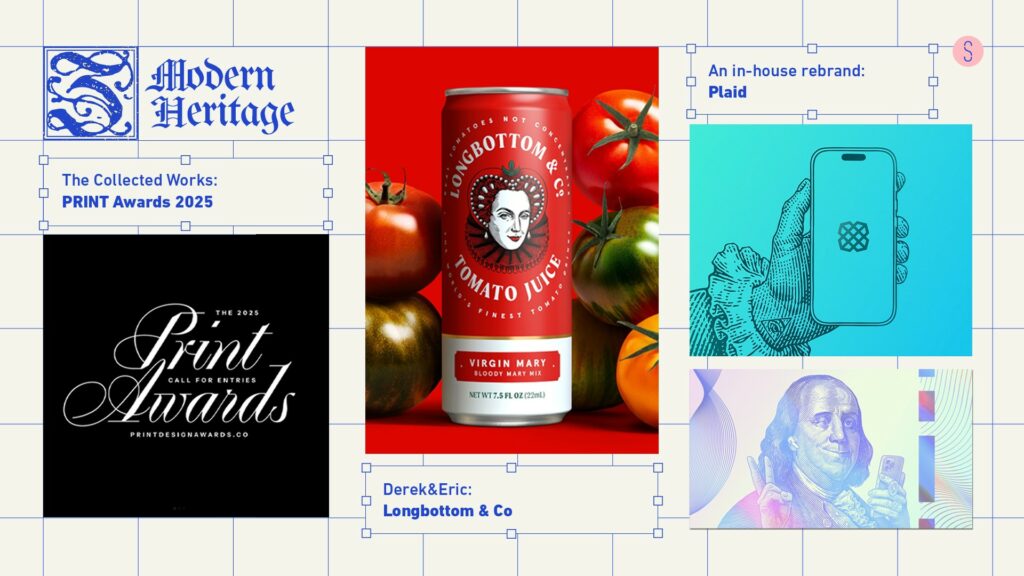
The future of design trends
It comes as no surprise that we’re experiencing the need for a sense of culture and history in a time where machine-learning presents such an unpredictable future. With the physical labour of human crafts and artisanal skills becoming a limited resource in our increasingly digital world, we expect to see many more design trends that are human led. With that said, it’s also exciting to see how technological advancements have pushed creatives to more inventive methods of design and animation, so we look forward to seeing how far the industry will continue to push the boundaries of visual communication.
